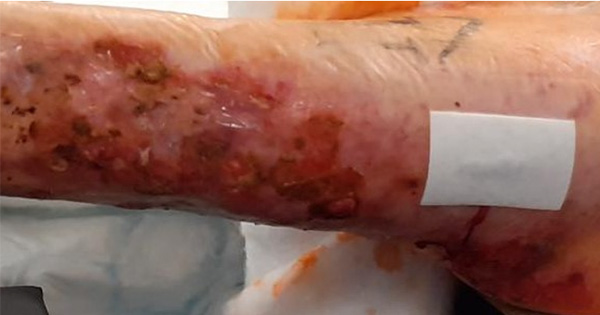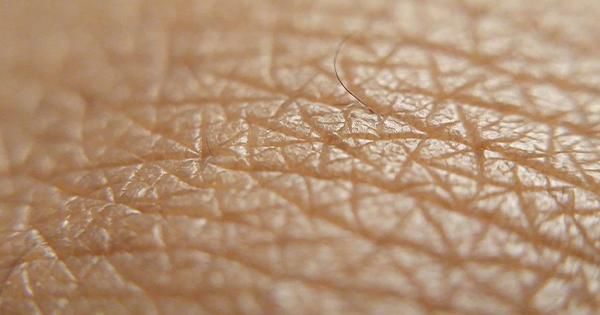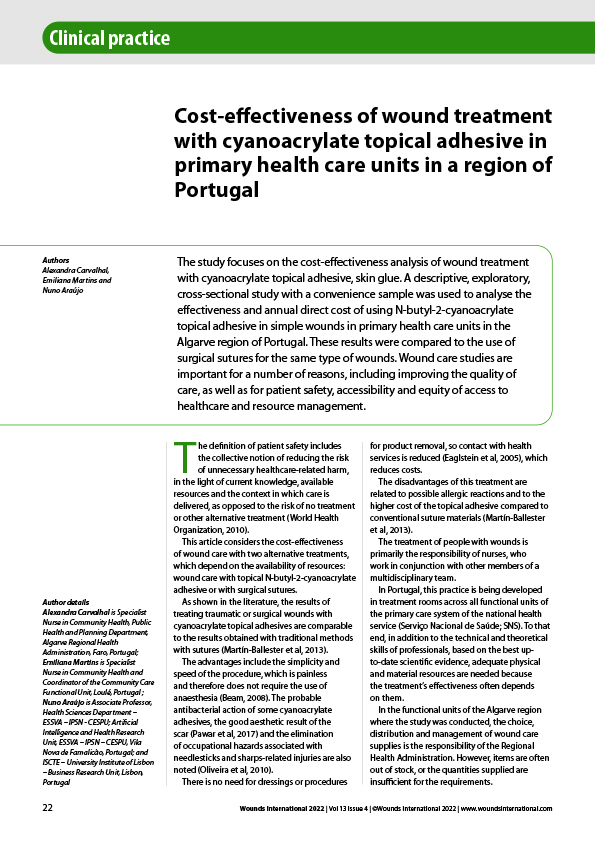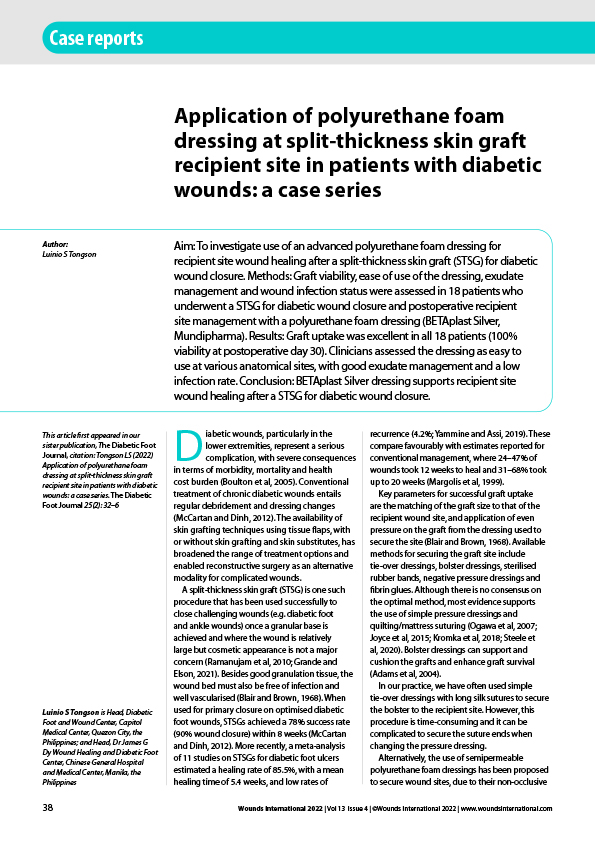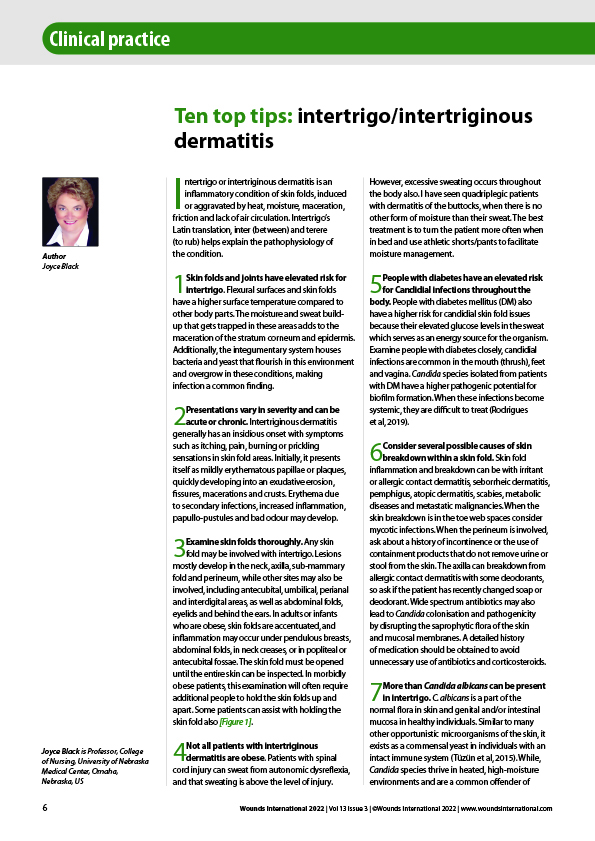Compromised skin integrity can have a significant impact on the quality of life of patients, their family, friends and carers (Wounds UK, 2018), and can increase the risk of many complications related to the skin. These may include pressure ulcers, infection, moisture-associated skin damage (MASD), medical adhesive-related skin injury (MARSI, Box 1) and skin tears (Box 2; ISTAP, 2018), which can lead to pain, reduced mobility, poor quality of life, further health complications and increased healthcare costs (Wounds UK, 2018; Fletcher et al, 2020).
A MARSI includes any form of skin damage, such as skin tears, blistering or other forms of skin damage, that is caused by a medical adhesive.
While skin damage can occur in any patient group, those with fragile skin (e.g. in aged or very young skin) are particularly at risk. As a result, the incidence of skin damage is often increased (Box 3; Wounds UK, 2018).
What is happening with MARSI?
MARSI is often overlooked, and there is currently no internationally agreed, standardised and systematic approach to record and monitor its incidence and prevalence. At present, there is very little international data on MARSI [Box 4]. However, MARSIs are known to have a significant impact on a patient’s quality of life, resulting in pain, an increased risk of infection and delayed healing, as well as to clinicians and healthcare systems as care and management can be costly in terms of nursing time and money (McNichol and Bianchi, 2016; Fumarola et al, 2020; Downie and Collier, 2021).
To improve care in the area of MARSI, it is important to explore and learn from key drivers that led to pressure ulcer prevention becoming a major focus for NHS organisations. This analysis highlights what must be undertaken in the area of MARSI prevention for it to receive similar attention in the UK, to that of pressure ulcer prevention.
On review, the campaign to address pressure ulcer prevention evolved over time, with the key influencing factor being the availability of accurate, consistent and high-quality prevalence and incidence data. Awareness of this data resulted in impressive and sustained national campaigns driven towards implementing effective strategies for pressure ulcer prevention (Fletcher et al, 2021).
From this review, it is clear that the need to capture impactful data on MARSI (e.g. through Datix, reporting and route cause analysis) is paramount. To implement this into practice, there needs to be key stakeholder buy-in and inclusion in patient safety frameworks, such as the Patient Safety Incidence Response Framework (PSIRF; NHS England, 2022).
MARSI should be considered a preventable injury, but it is currently overlooked and underestimated (Hitchcock et al, 2021). This contributes further to under-reporting and compounds the problem. It must be emphasised that preventable injuries may constitute patient harm and, as such, should be taken seriously.
Learnings from South Australia
In South Australia, it is a requirement of the Health Patient Incident Management and Open Disclosure Policy Directive to report incidents and near misses into a Safety Learning System (SLS).
It is policy that all skin tears should be reported to the SLS as soon as practicable by the staff member who discovered the skin tear. Detailed guidance exists to help clinicians understand how and why to report a skin tear (Government of South Australia, 2023).
Interventions to prevent MARSI
Maintaining skin integrity
Maintaining skin integrity is everybody’s responsibility. Every clinician should take a holistic approach that includes a thorough holistic skin assessment, including a detailed medical history on presentation to aid in the prevention of a MARSI occurring (Wounds UK, 2018). Skin health correlates strongly with overall health – e.g. nutrition and lifestyle factors – and so working with patients to improve their awareness of the importance of skin health can have a positive effect on the patient’s risk for developing skin damage. Implementing good skin care is a crucial part and involves daily moisturising, avoiding excessive washing and using pH-balanced soap substitutes. Skin should be handled carefully and environmental hazards and clothing that may irritate should be avoided (Carville et al, 2014; Fumarola et al, 2020).
Risk assessment
All patients should be considered to be at risk of skin damage/MARSI, as it can occur in any patient group or setting (McNichol and Bianchi, 2016). However, there are risk factors that can increase the patient’s likelihood of developing skin damage – therefore, risk should always be assessed and mitigated whenever possible.
Risk factors generally fall into two categories: intrinsic (relating to the patient and their health) and extrinsic (relating to outside influences). For example, intrinsic risk factors may include the patient’s age or any underlying medical or dermatological conditions, while extrinsic risk factors may include the use of dressings or adhesives on the patient’s skin.
Figure 1 shows a suggested two-part risk assessment for MARSI that addresses both intrinsic and extrinsic factors. Identifying these risk factors means that the clinician can establish whether they can be modified and thus reduce the patient’s risk (e.g. improved nutrition, choice of dressings).
Skin assessment
A full skin assessment should be carried out for every patient before each application and removal of an adhesive, such as a dressing or medical device (McNichol et al, 2013; Fumarola et al, 2020):
- Look for local signs of irritation or damage where the dressing is being applied and assess the skin based on temperature, colour, moisture, turgor, integrity and fragility
- Conduct a visual inspection
- Ensure proper documentation.
Consideration of the patient’s skin tone should also be included, as different skin tones respond differently to injury and treatment (Dhoonmoon and Harikrishna, 2023). These considerations should include, for example, changes in skin colour and texture, touch, temperature, swelling/inflammation, and the overall condition/integrity of the skin (Dhoonmoon and Harikrishna, 2023).
Dressing selection
Dressing selection plays an important role in reducing the risk of damage to the skin. Using dressings and secondary fixation products that provide gentle, atraumatic removal can help to reduce the risk of skin damage and MARSI.
It has been stated that there is a need to consider the use of silicone adhesive in place of acrylic adhesive in at-risk or fragile skin (LeBlanc et al, 2021). Acrylic-based adhesives are very common in dressings but can be traumatic to fragile skin, whereas silicone adhesives provide minimal risk of trauma (LeBlanc et al, 2021).
Also, the ISTAP advocates for special attention to be paid to dressing selection in relation to the management of skin tears, which are classified as a type of MARSI when caused by the removal of medical adhesives (LeBlanc and Woo, 2022).
It has been proposed that the ideal dressing for skin tears is easy to remove and apply; does not cause trauma on removal; is non-toxic; provides a protective anti-shear barrier; creates an optimal environment for healing; is flexible and moulds to contours; manages exudate and infection; and can afford extended wear time (Wounds UK, 2022).
Soft silicone dressings have been also proven to provide a gentler option for patients with fragile skin at risk of damage, as they have been found to be less frequently associated with tearing or pain (Kim and Shin, 2021). With a silicone dressing, there is no need to use additional products such as adhesive removers; therefore, the overall dressing process is both simpler and more cost-effective.
Call to action
In patients with fragile skin, MARSI is potentially a significant challenge. These injuries are often preventable and can have a profound impact on patients’ quality of life, as well as adding to the considerable burden of wound care for clinicians and healthcare systems.
Appropriate dressing selection should help to prevent damage to patients at dressing change, particularly those with fragile or at-risk skin. The case studies in this article demonstrate the use of the Leukoplast skin sensitive range as a component of care in the prevention for MARSI in patients with extremely fragile skin. However, all patient groups can be at risk of skin damage and appropriate dressing selection and technique should be considered in all patients. In at-risk patients with fragile skin, taking measures to reduce the risk of damage should be considered paramount.
Achieving significant standardisation in MARSI prevention takes years to achieve – the first step to change is to start acknowledgment of the issue and begin data collection by recording MARSI as a patient harm.

